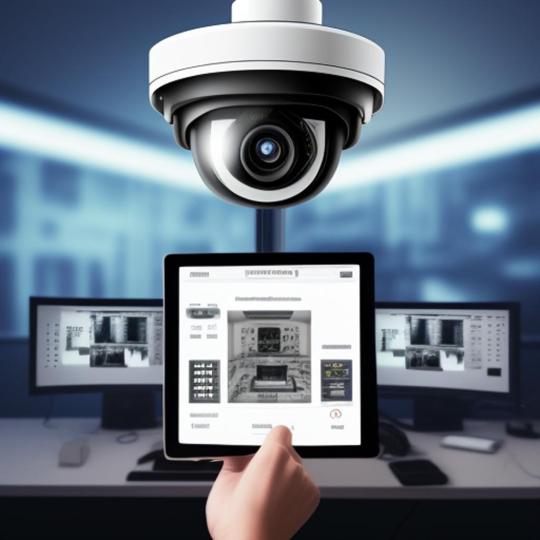Don't wanna be here? Send us removal request.
Text
Automation and services
Automation and Service: Shaping the Next Era of Efficiency and Customer Experience
The relationship between automation and service is becoming increasingly crucial to how companies operate and engage with their clients in today’s digital world. What started as a way to automate monotonous operations has evolved into a fundamental tactic that enhances customer satisfaction, increases operational effectiveness, and strengthens company resilience. Automation is a crucial service paradigm that is changing the nature of employment in the future; it is no longer merely a tool. Saral Automation is a progressive project (or business, depending on the situation) that specializes in developing efficient automation solutions. Saral Automation combines cutting-edge technologies with intuitive user interfaces to enable even non-technical individuals to leverage the power of automation, whether it be in business processes, software workflows, or industrial gear.

The Synergy Between Automation and Service
Automation refers to the use of technology to perform tasks with minimal human intervention. Automation has spread throughout industries like retail, healthcare, banking, and IT, from intelligent chatbots in customer service to robotic systems on factory floors.
The impact of automation is amplified when combined with service delivery. Service automation increases speed, accuracy, and consistency by integrating smart technologies into internal and customer-facing procedures. Self-service kiosks, automated ticketing systems, AI-powered suggestions, and predictive maintenance systems are a few examples.
Core Benefits of Automation in Service-Based Industries
Reliability and Precision Automated systems eliminate inconsistencies frequently linked to human performance by adhering to preset logic and standards. Higher quality standards in service delivery and more dependable results are the result of this.
Quickness and Expandability Automated systems work around the clock without getting tired, unlike human-operated services. Without hiring more employees, businesses can scale operations rapidly and effectively.
Cost-Effectiveness By decreasing the need for manual labor and operational faults, automation lowers expenses. This enables companies to reallocate resources to strategic projects that call for human knowledge.
Improved Experience for Customers Today’s consumers demand seamless, individualized, and quick experiences. These expectations are supported by automation, which makes it possible for quick replies, customized solutions, and seamless cross-platform interactions.
Industry-Specific Applications
Self-checkout systems, AI-driven product recommendations, real-time pricing adjustments, and automated inventory management are all advantageous to retail and e-commerce. These tools optimize backend operations while improving consumer happiness.
Automation is used in healthcare for virtual assistants, appointment scheduling, patient record management, and diagnostic support. These enhancements improve care delivery accuracy and cut down on wait times.
Automation is used in banking and finance for identity verification, robo-advisory services, transaction processing, and fraud detection. It lowers operational risks while enhancing consumer engagement and compliance.
To provide effective and continuous service delivery, IT services rely on automation for software upgrades, infrastructure monitoring, ticketing systems, and troubleshooting.
Blending Technology with Human Expertise
Even with all of its advantages, automation cannot completely replace human interaction, especially in fields that call for emotional intelligence, creativity, or empathy. The best outcomes are frequently obtained by using a balanced strategy that combines automation with human control. For example, chatbots can respond to simple consumer questions, but human agents can intervene when dealing with delicate or complicated situations. With this hybrid model, efficiency and speed are guaranteed without compromising customization.
Challenges to Consider
Automation implementation is not without challenges. Among the main difficulties are:
Integration with Legacy Systems: Costly upgrades or reengineering may be necessary if older technologies are incompatible with contemporary automation solutions.
Employee Resistance: Staff members may oppose automation if they fear losing their jobs. Initiatives for reskilling and open communication are essential to making this shift easier.
Initial Investment: Although automation lowers expenses over time, there may be a sizable upfront cost for equipment, software, and training.
The Future of Automation in Service
With the development of robotics, machine learning, and artificial intelligence (AI), the future is even more exciting. Automation systems can now adapt, learn from data, and make decisions on their own thanks to these technologies. Hyperautomation is a growing trend that involves employing linked technology to automate whole business operations from start to finish.
Isolated tools are only one aspect of hyperautomation. To design completely automated workflows, it combines low-code platforms, analytics, AI, and RPA (robotic process automation). IT operations, supply chain management, and customer onboarding can all be revolutionized by this strategy.
conclusion:
Nowadays, automation and service are closely related, which is causing a significant change in the way companies provide value. Smart technology and human contact must be balanced for success. Leading this shift is Saral Automation, which offers affordable, scalable, and easy-to-use automation systems that increase productivity without sacrificing human interaction, enabling everyone to have access to sophisticated automation.
1 note
·
View note